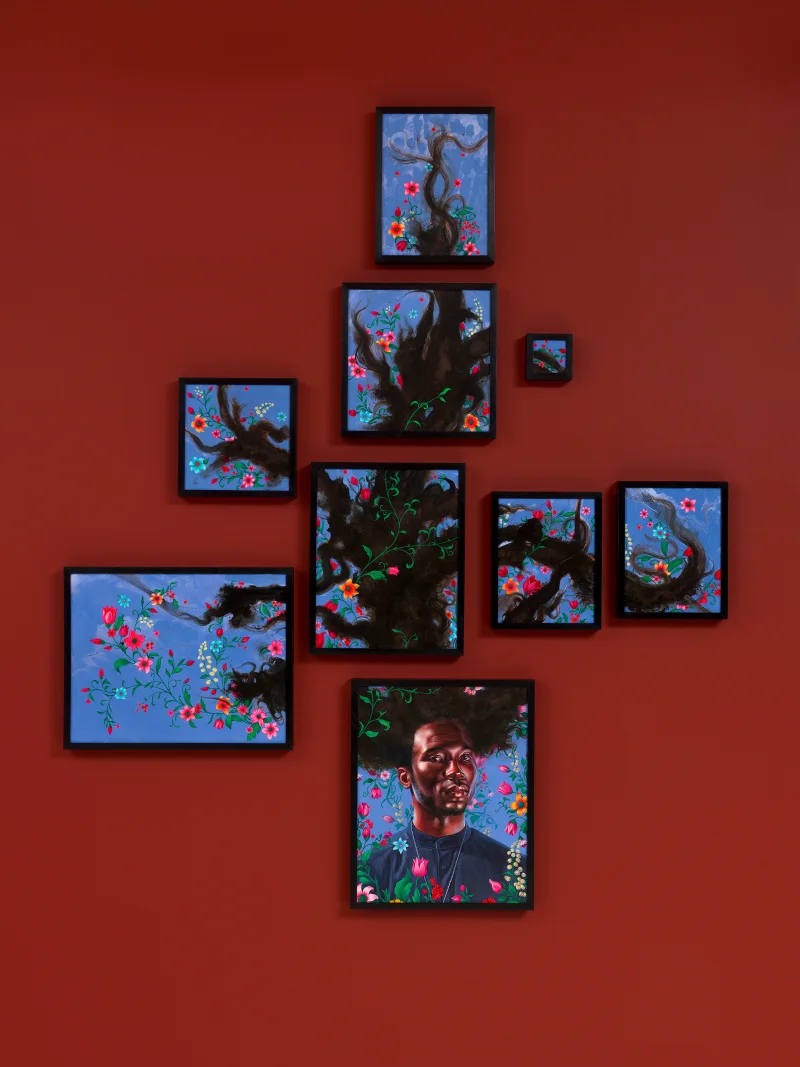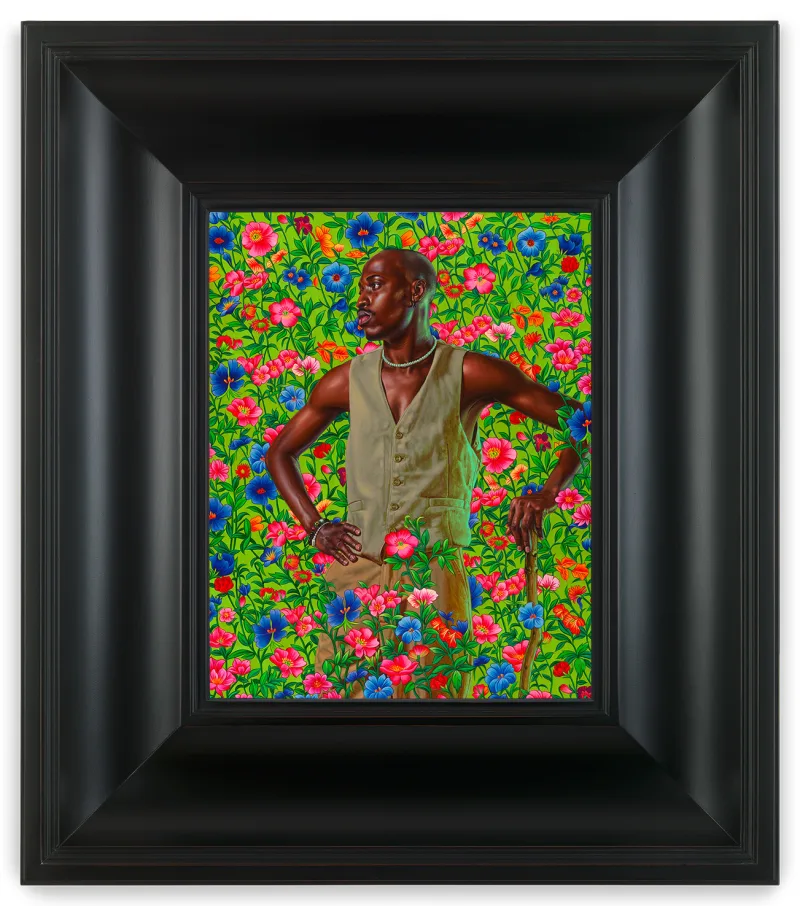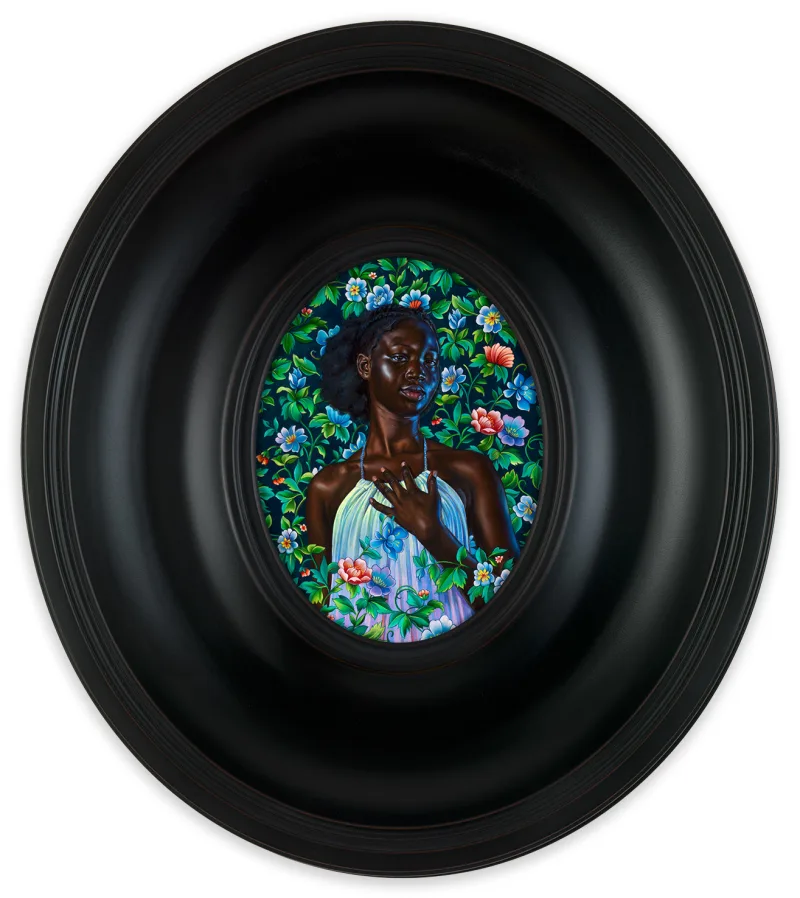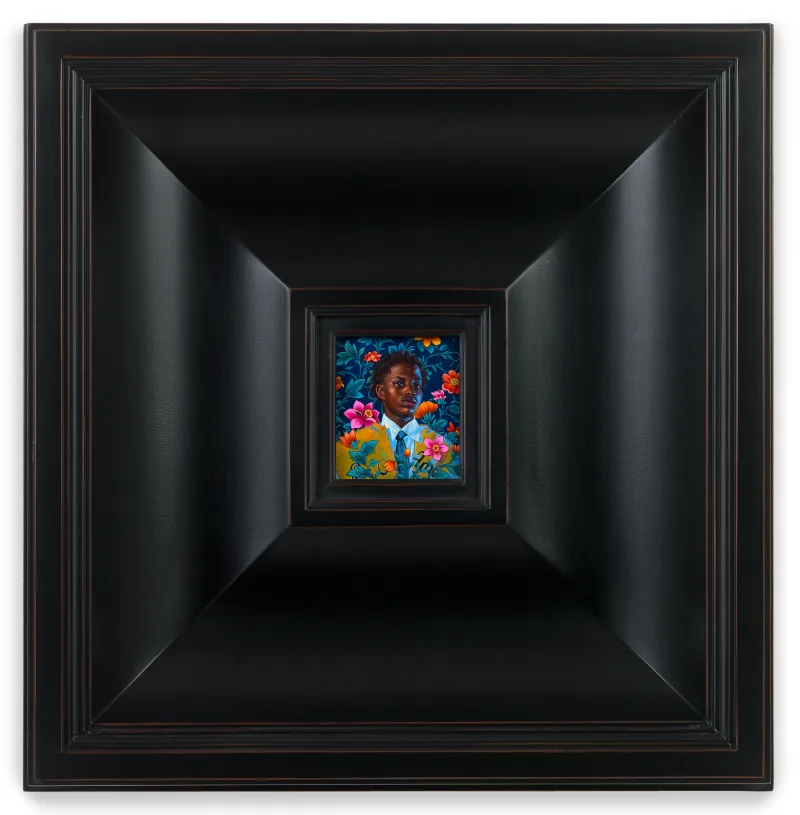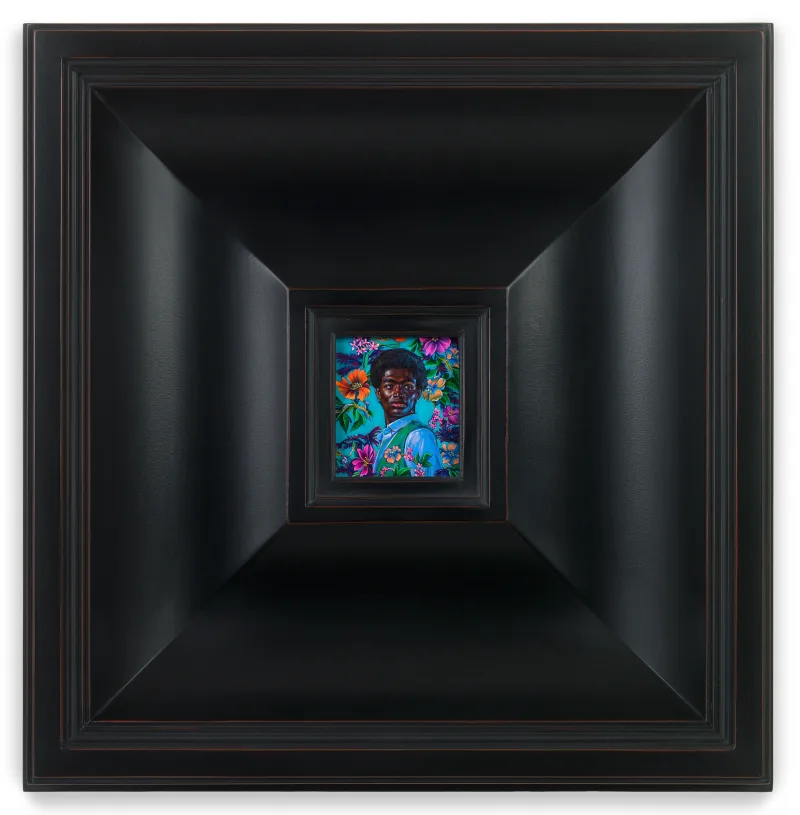
Kehinde Wiley: Fragments from the treasure house of darkness
Overview
Stephen Friedman Gallery presents 'Fragments from the treasure house of darkness', Kehinde Wiley’s first solo exhibition in London in three years following 'The Prelude' at The National Gallery.
Wiley is known for his vibrant and highly naturalistic paintings of contemporary African American and African Diasporic men and women, reconstructing hierarchies and conventions of classical portraiture. Marking a new direction in his practice, the artist has created two multi-part paintings for the exhibition alongside a series of 60 paintings inspired by historic miniature portraits that first appeared in European royal courts in the sixteenth century. These deeply personal objects were used throughout centuries to symbolise love, and to commemorate births and deaths.
The exhibition takes its cues from scale and the way it is used as a force within the medium of painting. Whether it be the imposing compositions of early religious and historic painters like Michelangelo and Jacques Louis David or the “performative” oversized creations of abstract expressionists Jackson Pollock and Mark Rothko, Wiley considers the way scale is deployed in art to demonstrate dominance and reinforce ideas of power.
In this new series, Wiley turns this idea on its head and instead harnesses the majesty of the monumental paintings for which he is known and employs it on a miniature scale, encouraging the viewer to question their preconceptions of the correlation between size and power in art history. Traditionally small is often viewed as meek, but here the artist demonstrates power in a decreased scale, simultaneously imploding the norms of gender and racial hierarchies.
Stephen Friedman Gallery presents Fragments from the treasure house of darkness, Kehinde Wiley’s first solo exhibition in London in three years following The Prelude at The National Gallery.
Wiley is known for his vibrant and highly naturalistic paintings of contemporary African American and African Diasporic men and women, reconstructing hierarchies and conventions of classical portraiture. Marking a new direction in his practice, the artist has created two multi-part paintings for the exhibition alongside a series of 60 paintings inspired by historic miniature portraits that first appeared in European royal courts in the sixteenth century. These deeply personal objects were used throughout centuries to symbolise love, and to commemorate births and deaths.
The exhibition takes its cues from scale and the way it is used as a force within the medium of painting. Whether it be the imposing compositions of early religious and historic painters like Michelangelo and Jacques Louis David or the “performative” oversized creations of abstract expressionists Jackson Pollock and Mark Rothko, Wiley considers the way scale is deployed in art to demonstrate dominance and reinforce ideas of power.
In this new series, Wiley turns this idea on its head and instead harnesses the majesty of the monumental paintings for which he is known and employs it on a miniature scale, encouraging the viewer to question their preconceptions of the correlation between size and power in art history. Traditionally small is often viewed as meek, but here the artist demonstrates power in a decreased scale, simultaneously imploding the norms of gender and racial hierarchies.
In this exhibition, Wiley extracts “a sense of the heroic” from Nigeria, where the artist met each of his subjects on the same day at the University of Lagos. From sitters donning streetwear to those in traditional West African dress, Wiley’s meticulous new paintings capture a diverse cross-section of young people. The lavishly detailed, floral backgrounds used in each of these works are typical of Wiley’s practice. The artist has always been inspired by an ongoing interest in textiles and a fusion of period styles, including French Rococo and Dutch wax prints. Vibrant botanical patterns entangle Wiley’s subjects and exude the grandeur of Old Master paintings through their facial expressions and poses. The artist directs the viewer’s gaze in these miniature paintings by using oversized oval and rectangular frames, a visual style that was extremely popular in the eighteenth century - particularly among portraits.
Wiley’s work continues to bring art history to the forefront of contemporary culture, challenging and reinterpreting its narratives and celebrating people of colour and in this new series spotlighting the beauty, self-invention and magic of being young and hip on the streets of West Africa.
Stephen Friedman Gallery presents 'Fragments from the treasure house of darkness', Kehinde Wiley’s first solo exhibition in London in three years following 'The Prelude' at The National Gallery.
Installation Views











